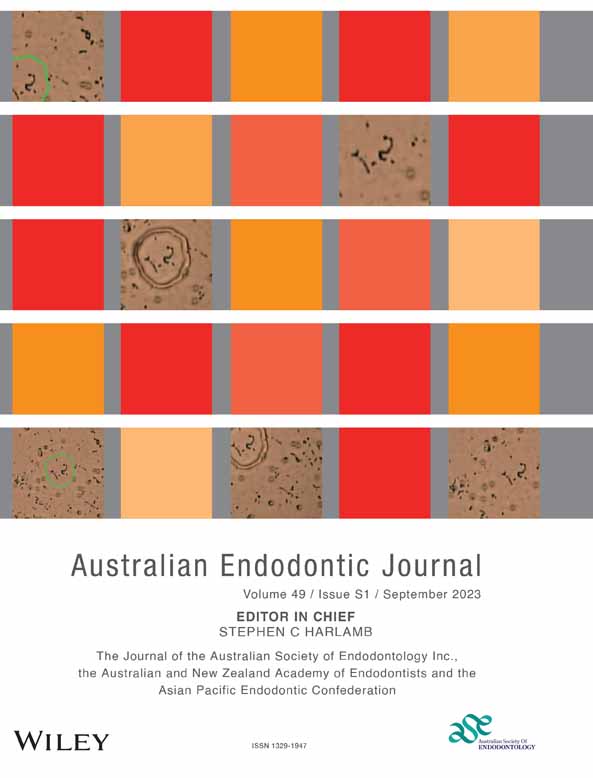Gap volume and sealer penetration of C-shaped root canals obturated with cold hydraulic technique and calcium silicate sealer
Abstract
This study compared the gap volume and sealer penetration in C-shaped root canals prepared with adaptive core rotary files and obturated with cold hydraulic compaction using calcium-silicate sealer, warm vertical hybrid compaction, or lateral compaction using epoxy-resin sealer. Thirty-six extracted mandibular molars with pulpal floor configuration Types I and III were used. The teeth were prepared using XP-Shaper and XP-Finisher and obturated with: group 1: cold hydraulic compaction/calcium silicate, group 2: warm vertical hybrid compaction/epoxy resin, or group 3: lateral compaction/epoxy resin. The gap volume was evaluated using μ-CT. The sealer penetration depth and area were evaluated using confocal laser scanning microscopy. The gap volume in groups 1, 2, and 3 was 0.82%, 0.24%, 0.80%, respectively, which were not significantly different (p > 0.05). The gap volumes in the obturated C-shaped canals were not significantly different among the CHC/CSBS, WHC/ERS, or LC/ERS groups. CHC/CSBS was the most convenient technique.
CONFLICT OF INTEREST
The authors deny any conflicts of interest related to this study.




